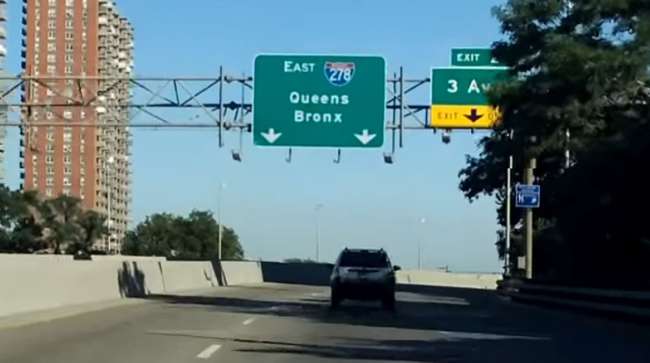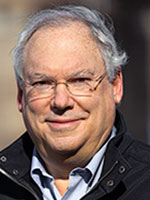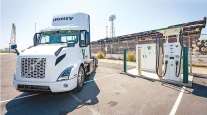Staff Reporter
NYC Leaders’ Plan for Expressway Aims to Toughen Truck Enforcement

[Stay on top of transportation news: Get TTNews in your inbox.]
New York City officials have unveiled a plan to extend the life of the Brooklyn-Queens Expressway cantilever that includes a goal of reducing truck traffic on the corridor.
Known as the BQE, the route carries part of Interstate 278 through New York City. A portion of the corridor contains a triple cantilever, which carries three levels of vehicular traffic.
New York City Mayor Bill de Blasio and New York City Department of Transportation Commissioner Henry Gutman released the plan. Its four parts focus on preserving the structure, executing near- and long-term maintenance, expanding monitoring and enforcement, and developing a community-based vision for the entire corridor.

Gutman
One of the methods outlined to help preserve the structure is a comprehensive traffic management and monitoring plan. The city will install weigh-in-motion technology to automatically fine overweight trucks. According to the plan, the New York City Police Department will surge enforcement monthly, with additional units boosting efforts for spans of several days.
“A critical piece of prolonging the life of the roadway is taking the enforcement of overweight trucks seriously,” said New York State Assembly member Jo Anne Simon (D-Brooklyn).
Starting Aug. 30, crews will shift lane markings on a segment of the BQE, taking the alignment from three lanes in each direction to two. This shift will take place on the section of route between Atlantic Avenue and the Brooklyn Bridge. The new configuration will offer two wider lanes and a shoulder rather than three relatively narrow lanes. This change is meant to reduce weight along this segment and reduce delays caused by breakdowns and collisions.

Hems
Trucking Association of New York President Kendra Hems said the group’s two main concerns are the focus on truck enforcement and the reduction in lanes on the corridor, which already is highly congested.
“At a time when we’re trying to focus on addressing emissions and reduction of greenhouse gas, it just doesn’t make sense that we would increase congestion instead of reduce it,” Hems told Transport Topics. “To drop that down to two lanes is just going to make that situation much worse and put a lot of pressure on the trucking industry in terms of hours-of-service constraints.”
A third method to preserve the structure listed in the plan is stopping water infiltration by addressing the structure’s joints and improving drainage.

What's next for data gathering and analytics programs in trucking? Host Seth Clevenger speaks with Andrew Johnson of PrePass Safety Alliance and Chris Orban of Trimble Transportation. Hear a snippet above, and get the full program by going to RoadSigns.TTNews.com.
Throughout the summer and fall, city officials plan to work with communities from the boroughs, businesses and members of the freight industry on a long-term vision for the future of the corridor. Rep. Nydia Velazquez (D-N.Y.) has suggested the potential of rail and water solutions for freight movement to mitigate environmental and infrastructure-related impacts.
Hems said TANY supports other modes of transportation where they make sense, but noted there always will be a need for trucks to make final deliveries. She said traffic coming out of the Port of New York and New Jersey often relies on I-278.
“I think what’s frustrating here is this continued rhetoric about eliminating trucks from New York City and shifting freight to other modes,” Hems said. “They’re tying that into this whole plan, which I think is irresponsible because trucks aren’t going away.”
Want more news? Listen to today's daily briefing below or go here for more info:




